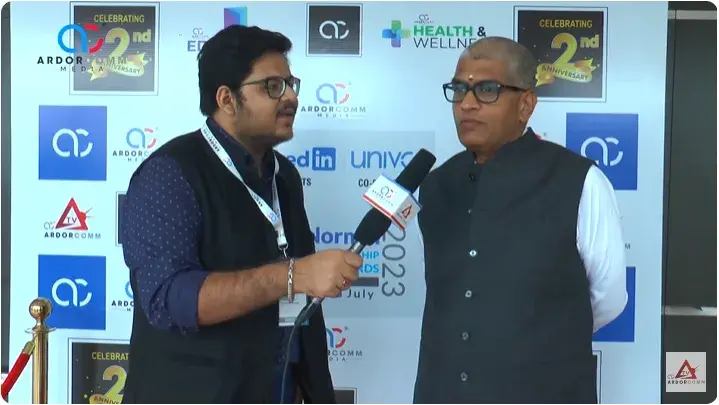Dr. Heera Lal, Greater Sharda Sahayak Command Area Development Authority, Govt. of UP emphasised on students interest in choosing career pathway
“Relying 100% on digital methods is not ideal. There needs to be a balance between digital and physical education” said Dr Heera Lal, Greater Sharda Sahayak Command Area Development Authority, Govt. of UP What does “New Normal” means to you? Thank you for inviting me. The term “New Normal” in education, in my opinion, should mean that when a student enters an institution and eventually graduates, they should leave not only with a certificate but also with a profession. The old system of education, where students just leave with a certificate, is not sufficient in today’s world. We need to identify a student’s passion from the moment they enter our institution, help them grow that passion, and turn it into a profession by the time they graduate. This will ensure that they are not only employable but will also enjoy their profession. How should we address the digital divide between urban and rural areas, and what initiatives should be taken to bridge this gap? The digital divide is a significant issue. However, in my opinion, relying 100% on digital methods is not ideal. There needs to be a balance between digital and physical education. Based on my personal experience, the effectiveness of physical education is much higher than that of digital education. Therefore, I believe the ratio should be 70% physical and 30% digital to ensure that students receive a well-rounded education. How should education balance between skills and employability? As I mentioned earlier, if you impose something on a student that they do not enjoy, they will not take an interest in it, and you will not achieve the desired objectives. Every subject, every action, every activity is equally valuable today. The focus should be on developing a student’s passion so that when they graduate, they have a profession that aligns with their interests. This will make them not only employable but also fulfilled in their careers. Which department or position has been the most inspiring and provided the most learning experience for you? Every department and position I’ve held has been inspiring and challenging in its own way. For instance, the position of District Magistrate (DM) is highly regarded, but I have enjoyed and learned a lot from every position I’ve held, even those considered less desirable. Whether in the cultural department or any other, I have embraced each role and found immense joy and learning in it. The key is to have the ability to govern effectively, no matter where you are, and turn every position into a meaningful experience. In events like this, where government dignitaries, policymakers, corporate leaders, and academics come together, what do you learn, and what is the experience like? Such events are crucial because society is like a bouquet that requires a variety of flowers. By bringing together people from different fields—bureaucracy, academia, technology—you create a complete and impactful product. This initiative is commendable and beneficial for our society. We are celebrating the third anniversary of our media company, AdCo Media. Do you have any message or good wishes for our company? I wish that your company continues to grow and thrive, at least 30 times more in the coming years. Keep evolving and adapting to the needs of the time. My good wishes are with you as you continue doing the great work you are doing. Thank you for being a part of this forum.



